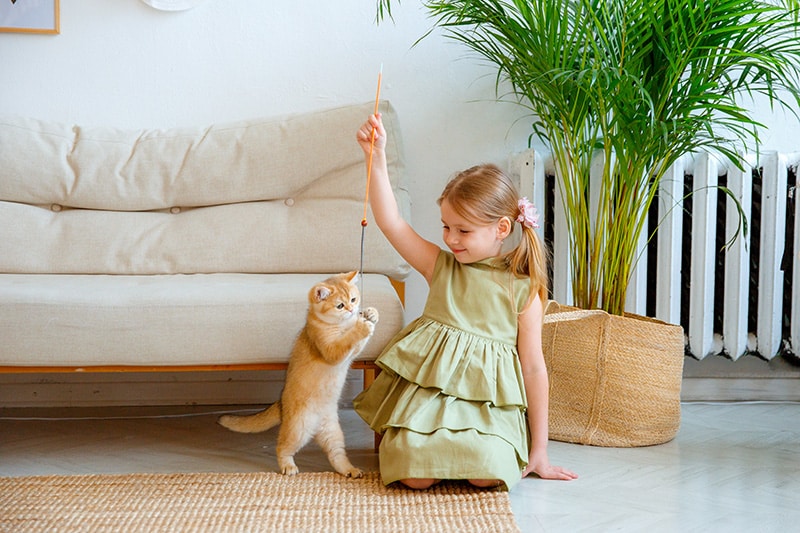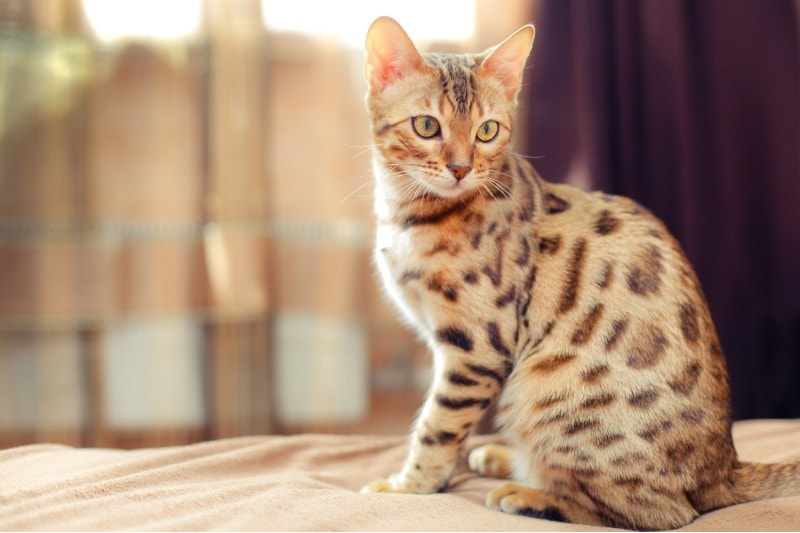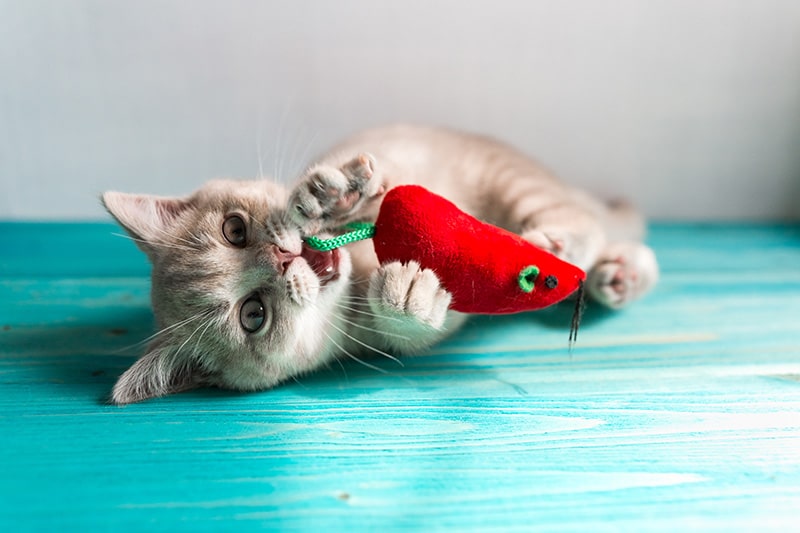Click to Skip Ahead
If you have an Aries cat, you know it! There’s really no denying these traits. An Aries is always going to be strong, even if your cat is also cuddly and lovable. Being an Aries is all about strength, material possessions, and leadership.
Your cat is very likely the one that rules the roost. An Aries cat gets the wrong idea and thinks that they run the entire household. The Aries has the attitude that if you don’t do it, they will, and they’ll do it right. Your Aries cat might seem like they’re condemning you for every last little thing that you do, and chances are, they are!
What Is an Aries? (March 20—April 19)
The leader, the solitary soldier—the Aries screams order wherever they go. They are not afraid to face the darkness as long as it means getting the job done. They have a very independent spirit, meaning that there is no better way to get the job done than to do it yourself.
The Aries will be a pillar of strength when you feel like breaking, and they never burden the world with their own problems. They have the motto that you have to pick yourself up by your bootstraps and seize the day.

Aries Symbols
The Aries is one of the six positive signs of the zodiac. The symbol for the Aries is the head of a ram. Like the ram, they share characteristics of stubbornness and rigidity. But also, they have determination and resilience.
It might also come as no surprise that Aries is the emperor of the tarot card deck. Authority, assertiveness, and manifestation, the Aries harnesses all the traits of this card.
Personality & Traits
Aries, as a whole, are real go-getters. They require having stimulation at all times and can get bored very easily. Don’t think that you’re going to pull a fast one over on an Aries. These particular zodiacs in the star sign are good at calling BS.
They will not be the one playing into your shenanigans. Despite matter-of-fact attitudes, they can be very loving and tend to remain incredibly loyal to those they care about. An Aries has the concept of once family, always family.
However, an Aries is the one who will give you tough love. Someone who has an Aries star sign will be able to stand firm in their convictions without bending to another person‘s whims. But they also are capable of great understanding and pushing you to achieve your potential.
It’s always good to have an Aries in your life. They are the person who tells you exactly what you need to hear, even if you don’t want to hear it.
- Ambition
- Confidence
- Energy
- Enthusiasm
- Efficiency
- Impatience
- Anger
- Short temper
- Impulsive
- Competitive

Compatibility with Other Signs
Some people mix very well with certain types of personalities, and others, not so much. When it comes to the fiery, fast-moving Aries, which signs are the most and least compatible? We have the answers.
Compatible Signs
- Leo
- Sagittarius
- Gemini
- Libra
- Aquarius
Incompatible Signs
- Taurus
- Capricorn
- Cancer
An Aries Cat: What to Expect
So, you have an Aries cat. They are bossy, pushy, and a little hard to manage at times. They might steal your belongings and not even say they’re sorry. They might bound through the house at all hours of the night, ripping down your curtains and tearing up your carpets.
But one thing is for sure, they will provide you with quality entertainment. The Aries cat is a very theatrical, excitable cat with a high energy level and a sassy side. Your areas will likely be very thirsty for adventure, so keeping them entertained can sometimes be challenging.
They love playing with all kinds of different toys and could have quite a high prey drive thanks to their go-getter traits.

Mars Rules Aries
Mars is the planet of war, which indicates the Aries’ strong personality. This energy is what propels them to take on roles of leadership—head of the class, first in line.
Aries Is a Fire Sign
As you’ve gotten to know quite well, the Aries is a fire sign. That means that they have a spice for life and an attitude that gets them through the hard times. An Aries cat will have no trouble figuring something out or blazing through any task.
Aries Is a Cardinal Sign
The Aries is a cardinal sign, sharing this trait with other signs like Cancer, Capricorn, and Libra. These signs begin at equinoxes and solstices, welcoming in the beginning of seasons.
Famous Aries Cats
Grumpy Cat
Grumpy Cat was one of the most popular cats on the internet. Could you tell he’s an Aries?? This guy was born on April 4th and lived a good, fiery life.
Coby the Cat
Coby the Cat was born on March 23rd in England. He is a British Shorthair who has picked up many followers the world over.
Smoothie the Cat
Smoothie the Cat was born April 1st in the Netherlands, stealing loads of likes with her lovely green eyes. She began heading toward internet fame in 2016 thanks to Instagram.
Bobbie the Persian
Check out the Mars-inspired eyes of this lovely Aries Persian from Qatar. Bobbie is currently 6 years old and taking the online world by storm.
Nuri the Cat
Nuri the Cat is another British Shorthair Aries that made the list. This ocean-eyed beauty lives in Germany and has blown up in fame on YouTube.
Conclusion
Now you understand a little bit more about exactly what an Aries is and what to expect if your cat is one. You might have already noticed their incredibly strong-willed personality and independent nature.
Having an Aries cat might be a bit challenging, as they will likely battle you for the title for head of household, but it’s certainly a strong personality that you can respect.
Featured Image Credit: Nils Jacobi, Shutterstock











